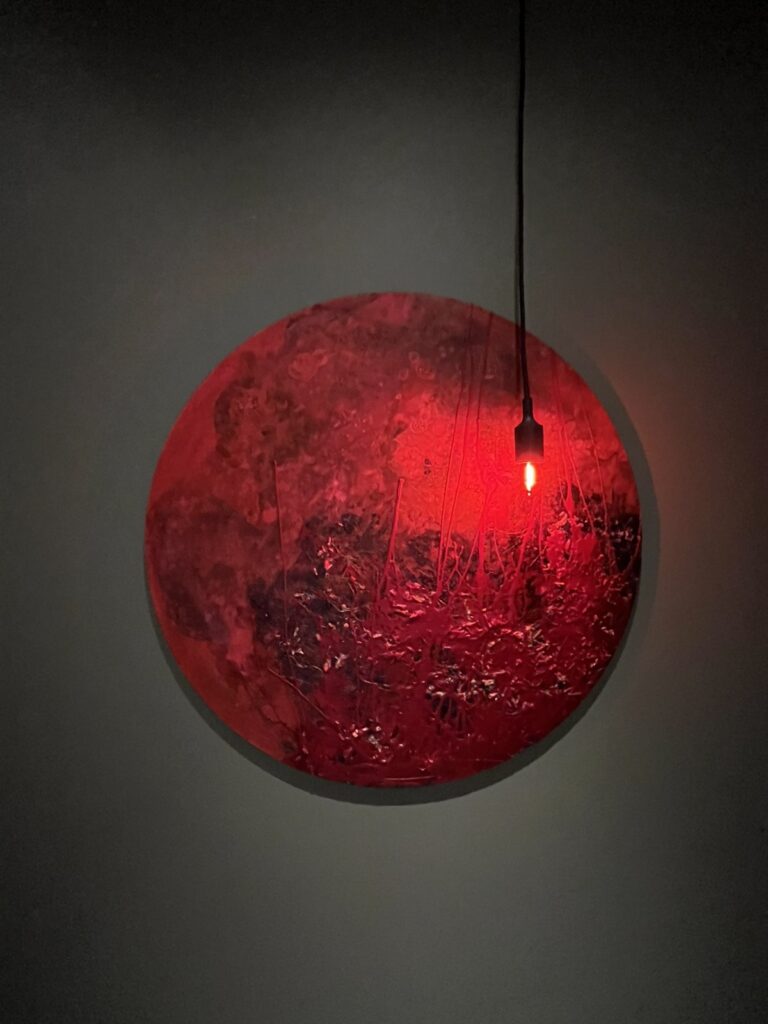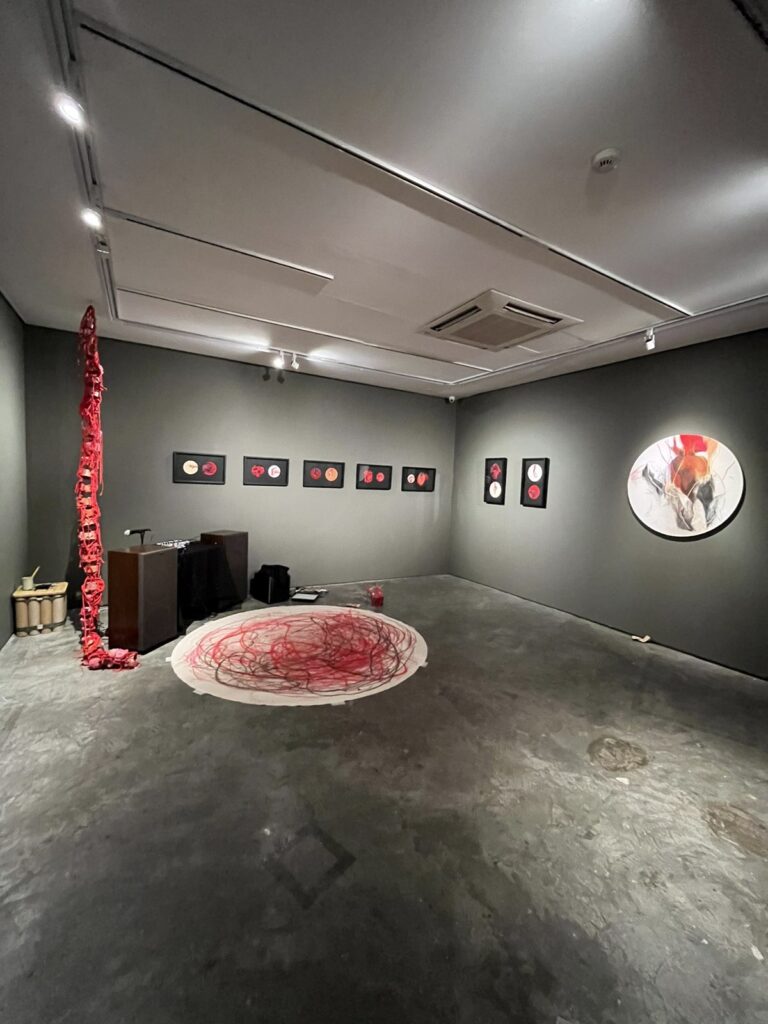Four new exhibitions at the home of contemporary art, ArtInformal, opened to kudos for the creative visions of our physical and spiritual worlds.
‘Ecotone’
Stephanie Frondoso and Erwin Romulo team up to create an experience of our physical realm — the sea meets a mountain, or the forest meets a lake, in a little parcel of earth called the ecotone. It is a transitional space where unpredictable activity occurs, as elements from both ecosystems integrate. In this two-person exhibit, ecotone is used as a metaphor applied beyond physical places.

Frondoso documented seascape images over a period of three years. Abandoning the futility of capturing their beauty, she became more interested instead in portraying how humans perceive nature from a flawed and limited lens. Three works reflect the growing complexity of human consciousness and behavior that evolve as civilizations progress and decline. The artist’s choice of materials and techniques are largely informed by her ongoing cultural work throughout the archipelago.
Romulo’s 30-minute sound piece completes the ecotone by introducing an aural realm into the visual presentation. LOVOL 002 is a sound machine built to transmit coded messages specifically created by the artist for it. The sound composition “Jeremy waving back from distant shores, maybe somewhere off the coast of El Nido” is composed of three layers: binaural recordings from seaside areas around the Philippines, music sketches on a mobile phone and morse code. Assembled from vintage and found parts, the work is very personal to Romulo, who uses the idea of the ecotone as a space to mitigate grief and broadcast over the divide.


‘Into the Future’
Geraldine Javier’s exhibition draws attention to pressing issues of the environment and climate change affecting the local barangay or neighborhood in the Philippines. This set of works comprises a pairing of
large-scale paintings — which in their allusion to “seascapes” appear to melt and drip in hues of watery blue and green, and are accompanied by a rectangular “pool” installation.

The artist’s process in creating these paintings ironically mirrors the slow and therefore hardly visible human-induced destruction to climate and the environment: the artist begins with a foundational layer of highly refined and detailed imagery that is gradually covered with layers of paint and built up to a more abstracted representation. — Excerpt from the essay by Dr. Michelle Antoinette and Dr. Wulan Dirgantoro
‘Cause/Cure’
In Cause/Cure, multi-disciplinary artists Christina Dy and Corinne de San Jose come together a decade after their last collaboration to revisit their examinations on the materiality of the human body in relation to time.
As a personal response to their own bodies’ journey, the artists attempt to imagine systems and protocols that speculate on a fictional narrative our physical bodies could navigate — a loop that cycles around movement, chronic pain, diagnosis and healing.

‘The beauty of (in)completeness’
Tosha Albor contemplates the flow of emotional energy that can flood the physical senses and cause disturbances that are at once both painful and healing. By referencing gestalt therapy, she explores these disturbances as aspects of herself that she once rejected but now chooses to re-integrate into her wholeness, towards completeness.


